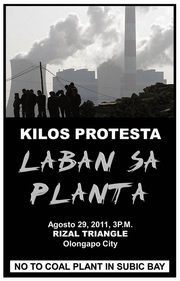 "In international climate negotiations, the Philippines has one of the strongest voices demanding climate justice. Ironically, justice is being denied to hundreds of communities living in the shadow of coal-powered plants. The country truly needs additional funding assistance to help our people and communities adapt to the impacts of climate change. But the moral power of that position is severely undermined by our decision-makers’ myopic obsession with coal." By Anna Abad
Philippine Daily Inquirer
Monday, October 29th, 2012
IN 2011, the Philippines topped the list of the most disaster-prone countries in the world. The distinction is confirmed by the series of weather-related calamities that was endured by the country last year, and which claimed over 3,000 lives, affected 15.3 million Filipinos, and resulted in economic losses of over P26 billion. It is a narrative that we have all become familiar with—that the Philippines is one of the countries most vulnerable yet least prepared to deal with the anticipated and escalating impacts of climate change.
The words “unprecedented” and “extreme” are often heard nowadays. Unprecedented amount of rainfall, unprecedented flooding, unprecedented melting of the ice, extreme weather, extreme drought. If everything that’s happening to our planet today has reached the point of superlatives, I fear what’s in store for our future.
In the absence of bold and dramatic action to reverse global warming, climate scientists warn that the pattern of extreme weather that we have been experiencing in recent times is likely to become the new “normal.”
While the greatest share of the responsibility to avert this crisis falls on the industrialized countries, it should not be construed as an excuse or a license for developing countries to continue mimicking the destructive path that is pushing the climate to a tipping point from which the world may never recover.
The burgeoning power crisis in the Philippines is the latest terrain where we see this dynamics at play. Despite the abundance of sources of clean and renewable energy (RE) in the country, President Aquino and his Department of Energy (DOE) have succumbed to converting the Philippines into a hotbed for dirty energy by anchoring its energy future on polluting and climate-destroying coal power plants.
The decisions now being made by the government—particularly the facilitated approval of a string of coal-fired power projects in Bataan, Batangas, Zambales, Palawan, Negros, Iloilo, Cebu, Davao, Davao del Sur, Misamis Oriental, Sarangani and Zamboanga—present a major setback in the Philippines’ quest to attain energy independence by harnessing sustainable and renewable energy sources. Instead of constructing coal-fired power stations that take three to four years to complete, and that continue to perpetuate our dependence on finite and price-volatile fossil fuels, the country will be better off making the decisive transition to RE systems now. Compared to coal-fired plants, such systems take less time to build, and their fuel supply is virtually free and limitless. They are, moreover, exempt from the quirks and instability of a fluctuating market.
 One model we should examine is found in Germany, where extensive hybrid systems called “Renewable-Energy Combined Cycle Power Stations” are already up and running. This system relies on an integrated network of wind, solar, biomass and hydropower installations spread across the country. With this system, one can quickly adapt to variations in supply in any one resource by drawing on others.
In the Philippine National Renewable Energy Plan, the long-term goal includes a 100-percent increase in RE-based capacity by 2030. Given this glowing resource prognosis for RE, government planners will do well to replicate positive experiences elsewhere, instead of insisting on an already discredited model.
In Japan, for example, following the government’s announcement of the approved feed-in tariffs, electronics conglomerate Toshiba will be bringing in an investment worth $379.6 million to build large-scale solar plants. More clean-energy investment is expected to bring in billions of dollars into that country.
The DOE has awarded 313 renewable energy service contracts but to this day, not one has been developed. The fate of these projects lies in the hands of the DOE, which has yet to establish the eligibility criteria for renewable energy developers to proceed. More than three years after its passage, the Renewable Energy Law remains a paper promise.
In international climate negotiations, the Philippines has one of the strongest voices demanding climate justice. Ironically, justice is being denied to hundreds of communities living in the shadow of coal-powered plants. The country truly needs additional funding assistance to help our people and communities adapt to the impacts of climate change. But the moral power of that position is severely undermined by our decision-makers’ myopic obsession with coal.
Scientist Jim Hansen of the United States’ National Aeronautics and Space Administration neatly describes this predilection for making ill-advised decisions as an injustice similar to “storing up expensive and destructive consequences for society in the future.”
We have a real opportunity to set things right. We need strong, strategic and visionary leadership to advance real solutions instead of impetuous decision-making that exacerbates the roots of the climate crisis.
In this era of climate change, it is but appropriate for the people to expect their leaders to make decisions to move our societies toward the right direction. Investing in coal takes us back to the 19th century. Embracing renewable energy now advances us to the future. Aside from guaranteeing our energy security and independence, the latter also fortifies the demands by impacted countries and communities for climate justice.
In the final analysis, this is a moral choice that President Aquino has to make.
(Anna Abad is the climate and energy campaigner for Greenpeace Southeast Asia.)
Re-posted from: Philippine Daily Inquirer
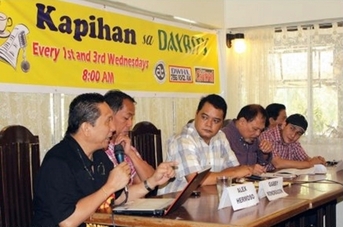 By Cecille Garcia, Manila Standard Today
MAY 15, 2012, SUBIC BAY FREEPORT — The planned coal-fired thermal plant here faces rough sailing as oppositors mass up to file a Writ of Kalikasan.
Alex Hermoso, lead convener of the Zambales-Olongapo Civil Society Network, said in a media forum Kapihan sa Dayrit’s that a case is being finalized to stop the project.
“We strongly oppose the setting up of the coal thermal Plant in Subic,” Hermoso said, on the issue of a coal energy source inside the Freeport.
Lawyer Leonardo Bernabe, of the Olongapo Integrated Bar of Philippines, said the local chapter would extend pro bono service in filing the Writ of Kalikasan case.
“Few months ago, we had a meeting with RP Energy where they presented the project but that didn’t change our position,” he said. “The IBP local chapter then passed a resolution strongly opposing the project.”
Bernabe said the writ may include the issuance of a Temporary Environmental Protection Order in case of grave injustice or irreparable injury.
Olongapo City Councilor James Gordon Delos Reyes cited a study of Dr. Art Mendoza on the coal thermal plant which would be “far more damaging than the eruption Mt. Pinatubo” if allowed to proceed.
“Subic is a popular tourism destination because of its pristine environment with triple canopy rain forest and rich marine resource,” he said.
Gabby Mondragon, consultant for ecology of the Subic Bay Metropolitan Authority, said new board members led by Chairman Robert Garcia were reviewing the contract, permits and the Certificate of Registration of Tax Exemption of the project proponent issued by the previous board.
“New conditions were imposed by the current SBMA Board including an assurance from the proponent that the project should be environment friendly,” he told the forum.
Forum producer Rey Garcia of News Central, a Subic-based regional business newspaper in Central Luzon, said proponent Redondo Peninsula Energy Inc. was invited but no representative showed up.
The forum was attended by Subic Bay Freeport Chamber of Commerce president Danny Piano, City Councilor Jong Cortez, Rotaract Club president Mike Dominic Piga, Olongapo Consumers Association president Shirley Emeterio, businessman Bong Sangco and media organizations in Olongapo.
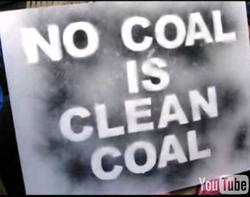 Power distributors and local big business, including RP Energy (Manila Electric Co., Aboitiz Power Corp. and Taiwan Cogeneration Corp.) and Global Business Power Corporation are notoriously aggressive in their propaganda-cum-marketing campaigns on pushing the fairy-tale of “clean coal" to extract mega-profits for the next 50 years - in particular, asserting that the Circulating Fluidized Bed or CFB coal-fired power plant to be constructed in Subic Bay is a “clean” technology.
There are three types of coal power plants currently in use today: Circulating Fluidized Bed or CFB plants; Pulverised coal-fired (PCF) power plants and Integrated gasification combined cycle (IGCC) plants. All of them produce global warming CO2 and other pollutants.
1. CIRCULATING FLUIDISED BED COMBUSTION (CFB) PLANTS
In CFB, coal is burned with air in a fluid bed mixing gas and solids. This is done either at ambient ("normal" atmospheric) pressure (called Atmospheric CFB) or under pressure (called Pressurized CFB), and at temperatures lower than those in PCF plants. The lower combustion temperatures in CFB systems cut the amount of NOx produced. Finally, because more than 95 percent of sulphur pollutants from the coal can be captured inside the boiler, CFB plants produce less SO2.
However CFB technology is often used with low quality coal. This together with lower thermal efficiencies means that CO2 pollution increases.
CFB uses much lower temperature and less oxygen, resulting in carbon monoxide formation and incomplete breakdown of organic compounds leading to the release of Polycyclic Aromatic Hydrocarbons (PAHs), of which the most potent CANCER-causing agents are: Benzo Anthracene and Benzo Pyrene (USEPA Environmental Document. Dec. 2000. J.L. Jacobson, et al., Journal of Pediatrics 116:38-44. 1990).
Among the pollution problems that the CFB technology does not address are:
1. Coal dust. This is blown to communities during coal transport, and from the coal transfer points, coal crushing station, and uncovered coal piles at coal storage area. Coal dust irritates the lungs. It also accumulates on surfaces of materials (e.g., roofing materials), which causes them to erode.
2. Runoff from coal piles. Created by rainfall, this runoff contains pollutants that contaminate land and water, including municipal water supply sources.
3. Carbon dioxide (C02). This is released during coal burning. C02 is the primary human cause of global warming/climate change, which is causing weather extremes—intense droughts, heavier downpours, floods, and landslides.
4. Small airborne particles. Also released during coal burning, these particulate matters—particularly those with a diameter of less than 2.5 microns—cause grave respiratory ailments such as chronic bronchitis and aggravated asthma.
5. Air toxics. Released either in gaseous or fine particulate form, these toxics include mercury, arsenic, cadmium, other heavy metals, and traces of uranium. These air toxics cause cancer, mental retardation and various disorders of the vital human organs (particularly the lung, kidney and liver) and the nervous system.
6. Polycyclic aromatic hydrocarbon (PAH). Burning of coal at low temperatures results in incomplete breakdown of organic compound and thereby increased PAH emissions, which have carcinogenic properties.
7. Solid wastes (bottom ash and fly ash). CFB coal plants produce more solid wastes than conventional plants because of the limestone used. The coal ash contains toxic substances including arsenic, mercury, chromium and cadmium, which can contaminate drinking water supplies and damage vital human organs and the nervous system. As volumes of coal are reduced to ash, the concentration of these toxic elements increases.
8. Cooling water. Coal plant operations require massive amounts of cooling water. Drawing such water from groundwater sources can deplete local fresh water supplies. When this water is drawn from the sea or other water bodies, fish eggs, fish larvae, and juvenile fish may also come along with it. Moreover, adult fish may become trapped against the intake structures, many of which are injured or die in the process.
9. Cooling water discharge. Being hotter than the water that receives it, this “thermal pollution” has adverse impacts on the aquatic life of the receiving waters. It can decrease fertility and increase heart rates in fish. Coal plants also add chlorine or other toxic chemicals to their cooling water to decrease algae growth. These chemicals are also discharged back into the environment.
2. PULVERIZED COAL-FIRED (PCF) POWER PLANTS
In these plants, coal is ground into a fine powder and blown into a boiler. It burns at between 1,300°C and 1,700°C, creating steam which drives a generator and turbine. This method is by far the most established and common of the three. PCF plants account for over 90 percent of the electricity produced from coal, and about 38 percent of the power generated from any source around the world.
The bad news is that PCF plants are also horribly inefficient. Even the most efficient ones still waste half of their energy and the worldwide average thermal efficiency of PCF plants is less than 32 percent meaning that almost 70 per cent of the energy is wasted. The lower the efficiency level, the more coal needs to be burnt to generate electricity, spewing out even more CO2 emissions.
Ninety percent of the coal fired power stations in the world use this type of technology (Greenpeace).
3. INTEGRATED GASIFICATION COMBINED CYCLE (IGCC) PLANTS
IGCC plants are the newest of the three, with average thermal efficiencies between 40 and 50 percent. At present, the use of IGCC for coal-based electricity production is limited with only four coal-based IGCC demonstration plants in operation globally.
The process they use involves two separate steps: First, coal is turned into gas through a controlled ‘shortage’ of air in an enclosed pressurized reactor. The resulting gas – a mixture of carbon monoxide (CO) and Hydrogen (H2) called Syngas – is then burnt to drive a gas turbine. In the second step, the exhaust gas from step one is used to create steam, which drives a separate steam turbine.
Typically, the gas turbine in step one generates 60 – 70 percent of the power, with the steam turbine generating the rest (Greenpeace).
CLEANER POLLUTANT?
Local 'cleaner pollutant' defender, like Prof. Danny Piano, who claimed in his letter on SBFCC position and update on coal power plant, “the plant that will be built is based on the new and much cleaner circulating fluidized bed (CFB) technology“, was singing the same out-of-tune song of RP Energy – “clean coal.”
But “clean coal” is a fairy-tale with a devastating ending.
While it is true that some plants are better than others, coal is an inherently dirty fuel. Along with the harm caused by coal mining, global warming CO2 and other pollutants are always produced when it's burnt.
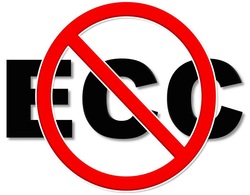 Environmentalists, local political leaders, Non-Governmental Organizations (NGOs), Civil Society Groups, students, professionals, stakeholders, and ordinary citizens have spoken about the negative and devastating effects of coal-fired plants. They have voiced their concern regarding marine and forest ecology destruction, acid rain, biodiversity imbalance, mercury in food, health and welfare of future generations, depleting seafood source, global warming and climate change, destruction of famous tourism attraction sites, alternate and renewal energy options, economics of running a coal-fired plant and many other related issues.
Let me add and count more reasons why the ECC of RP Energy must be cancelled immediately:
1. COAL PLANT SITE IS EARTHQUAKE PRONE
Based on their own Environmental Impact Statement, RP Energy Admits:
“Tectonic features of Philippine archipelago indicate that the Manila trench is found west of the proposed project site. A north-south trending belt of volcanoes, which include Mt. Pinatubo, Mt. Natib and Mount Mariveles are found east of the proposed project site. Recently, PHIVOLCS has declared Mount Natib as a potential active volcano, while the east Zambales Fault, which separates the mountain range of Zambales from the Central Luzon Basin, has been declared as an active volcano.”
“Moderate seismic activity has been detected in the area since the project site is near three prominent seismic faults as published by PHIVOLCS. These are the Iba Fault situated north of Subic, the East Zambales Fault parallel to Zambales Coast line and the Philippine Fault Zone.”
Just recently, strong earthquake rocks Zambales and Metro Manila. A magnitude 5.9 earthquake that rocked the province of Zambales was also felt in Metro Manila and other parts of Central Luzon and Northern Luzon, the Philippine Institute of Volcanology and Seismology (Phivolcs) said.
Therefore:
1. Why build the coal plant in a geologically active location?
2. What if a strong earthquake strikes and damages the ash ponds and leak million tons of coal ash to Subic Bay?
2. NO STUDY ON GROUND WATER RECHARGE
RP Energy admits:
"Spring water and groundwater will be utilized during the operation to supply the water requirement of the plant which is estimated at 800 cu. m/day (or 33 cu.m/hr or 145 GPM). At this rate, spring water as sole source of water supply will not be feasible. In addition, extraction of spring water may require the construction of a reservoir as natural channels may not have the required depth for the construction of intake structures. Therefore, the best option is for a water supply source would be groundwater.”
“However, recharge rates should be studied to minimize risk of saltwater intrusion as a result of over-extraction, where would occur if the extraction rate is greater than the aquifer recharge rate".
Questions:
1. When will the recharge rate be studied, when the plant is already operating?
2. What if it turns out there is less water to support the coal plant?
With increased capacity to 600 MW this means, 800 cubic meters per day or 292,000 per year, doubled to 594,000 cubic meters per year!
3. COAL PLANT SITE IS FLOOD PRONE
RP Energy admits:
“A network of natural drainage channels have been identified that pass through the project site and drain eastward into Subic Bay within the catchment basin where the project site is located. All stream flows are being fed by spring waters originating from the upper slopes between the elevations 600 and 800 masl of Mt. Silangin-Cinco Picos situated northwest of the project site.”
Questions:
1. Why build the plant where three active creeks flow through the site?
2. How about La Nina phenomenon and extreme weather events like massive and extended rain?
4. THERMAL DISCHARGE WILL CAUSE CORAL BLEACHING AND DEATH TO MARINE LIFE
RP Energy admits:
“Although the assumptions used in the modeling are more likely to overestimate the impact from the thermal discharge, there is uncertainty in the size and location of the areas to be affected by the cooling water discharge, particularly during weak flow. These uncertainties raise the importance of monitoring as a component of environmental management not only to facilitate compliance with water quality standards, but also to determine whether any sensitive marine habitats are being affected by thermal discharge.”
“However, no actual validation of the model against measured current data was undertaken due to lack of field data.”
“The characteristic circulation patterns in Subic Bay during the northeast and southwest monsoon seasons could restrict the dispersion of pollution loads in some areas of Subic Bay. Dispersion of nutrients away from potential sources such as rivers and discharges tend to be very low, especially in the eastern coastal areas of the bay where a number of semi-enclosed coves are located. Since the bay itself is also particularly enclosed by the presence of Grande Island, pollutants are generally confined inside the bay.”
MEANING, all the pollutants and hot water to be discharged by the coal plant will just circulate around the bay, thus making Subic Bay waters hotter and hotter (Subic Bay Hot Spring?) while building up all the toxins!
On Corals
RP Energy admits:
“Additional survey should be undertaken to identify coral species that can be removed and transplanted to other sites in the area, limiting the mortality of corals growing in the area. The survival rate of the transplanted corals will also need to be ascertained to identify the benefit of this method.”
“Although the loss of corals from the laying of intake and outfall pies on the seabed will occur, the location and final design of the pipes will be based on the results of thermal plume modeling.”
Yet, RP Energy already said, “the thermal plume modeling was not field-validated for lack of data.”
Thermal discharge will cause coral bleaching and and death to marine life due to increased temperature and waste water pollutants fron the coal plant.
5. THERE WILL BE UNABATED POLLUTION IN SUBIC BAY
On Heavy Metals and other Toxics
RP Energy admits:
“Coal naturally contains traces of heavy metals like mercury. When coal is burned to produce energy, mercury is released into the environment mainly through atmospheric emissions due to its volatile nature. Most heavy metals in the coal remain in coal plant waste products including fly ash and bottom ash. High concentrations of these metals that are released into the environment particularly through migration in soil and water may result to a threat to the marine ecosystem in cases where the potential source is located in a coastal area, such as that of the proposed plant.”
On Radioactive Wastes
RP Energy claims:
“Studies show that coal contains trace quantities of naturally occurring radionuclides including uranium, thorium, their radioactive decay products, and potassium-40 (USEPA, 2008). A study reports an average uranium and thorium content in coal of 1.3 ppm and 3.2 ppm, respectively (Gabbard, 2008). Most of these radionuclides do not burn, and remain and become concentrated in the ash when coal is burned. In coal-fired power plants, most the ash is captured (i.e. bottom ash), while fly ash has a potential to become carried away from the source and therefore migration of these traces of radionuclides can occur." But they further states that:
“Although the effect of radiation due radioactive materials on human health is a concern, studies have shown that radioactive elements in coal and fly ash do not pose a health concern.”
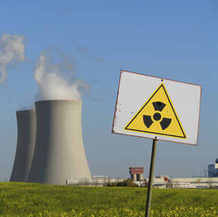 Facts:
Coal Ash Is More Radioactive than Nuclear Waste. By burning away all the pesky carbon and other impurities, coal power plants produce heaps of radiation
Conclusions from a series of studies showed that the waste produced by coal plants is actually more radioactive than that generated by their nuclear counterparts. In fact, the fly ash emitted by a power plant -a by-product from burning coal for electricity - carries into the surrounding environment 100 times more radiation than a nuclear power plant producing the same amount of energy.
Fly ash uranium sometimes leaches into the soil and water surrounding a coal plant, affecting cropland and, in turn, food. People living within a "stack shadow"- the area within a half- to one-mile (0.8- to 1.6-kilometer) radius of a coal plant's smokestacks - might then ingest small amounts of radiation. Fly ash is also disposed of in landfills and abandoned mines and quarries, posing a potential risk to people living around those areas. SCRAP STINKING ECC NOW!The anti-people coal-fired power project, which is being pushed by RP Energy - a mega-profit hungry consortium composed of Manila Electric Co., Aboitiz Power Corp. and Taiwan Cogeneration Corp., runs counter to the people's aspirations for alternative sources of energy that are environmentally viable and sustainable.
The blatant disregard by the profit hungry RP Energy Inc. of the above-mentioned reasons and basic requirements, is an arrogance of capital and the highest height of moral irresponsibility. While they may insist that they had legally secured the said stinking ECC, then we, people would strongly assert, not everything legal is moral. Scrap ECC now!
“We are like tenant farmers chopping down the fence around our house for fuel
when we should be using Nature’s inexhaustible sources of energy—sun, wind and tide.
I’d put my money on the sun and solar energy. What a source of power!
I hope we don’t have to wait until oil and coal run out before we tackle that."
- Thomas Edison, 1931
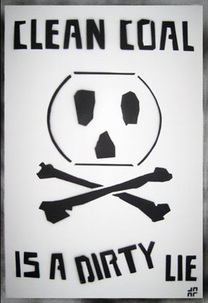 As we confront global warming and make choices about how to meet energy needs for the next generation, it is imperative to tap and develop the potential of efficient, clean and renewable energy sources and reconsider the heedless rush to build new coal-fired power plant in Subic, Zambales. Considering all the costs of coal along its entire fuel-cycle – from mine to smokestack, makes the case for renewable energy and efficiency even stronger.
Enlightened provincial, municipal and barangay government officials in Olongapo City and Zambales along with, business groups, church people, community leaders, youth, teachers and other professionals including grassroots coalitions and organizations like the Olongapo-Zambales Civil Society Organization (OZCSN), are all making the case with citizens and uniting strongly to stop new plants from being built.
CLEAN COAL? It’s a dirty lie. There’s no such thing as clean coal. You burn coal and you get carbon. Unfortunately, coal is dirty. It is one of the largest sources of carbon dioxide emissions in the world (Energy Information Administration). Extracting and burning coal generates hundreds of millions of waste products including fly ash, bottom ash, gas desulfurization sludge (which contains mercury, uranium, thorium, arsenic, and other heavy metals). Sadly, there are more numerous dirty samples of the byproducts and hazards that result from coal use.
We all know that the industry's "clean coal" message is mere public relation's spin – it is an advertising slogan. Like "fat-free burger" or "interest-free loans." It’s a last ditch grab of monopoly capitalists to extract more super-profits from the coal industry.
Coal industry is a 19th century antiquated thing. Until 21st century, the exploitative US monopoly capitalists, leading the coal industry has invested multimillion dollars in their aggressive propaganda campaigns on pushing the myth of “clean coal." American Coalition for Clean Coal Electricity are among front groups funded by US to create confusion about the health and environmental risks associated with coal burning.
As always, third world countries including the Philippines - a subservient client, are dumping grounds of obsolete technologies by world monopoly capitalists using dummy and or/ profit greedy local junior partners like the UNHOLY TRINITY - Manila Electric Co., Aboitiz Power Corp. and Taiwan Cogeneration Corp.
NO TO COAL! Zambales and Olongapo City doesn't need more coal — we need Green Energy. The Philippines has sufficient technically and economically accessible renewable energy to meet current energy demand almost six times over. Renewable technologies, such as wind, solar, waste-to-energy and many more can revolutionize the process and ways we produce energy and help prevent dangerous global warming.Click to sign petition. www.ipetitions.com/notocoal
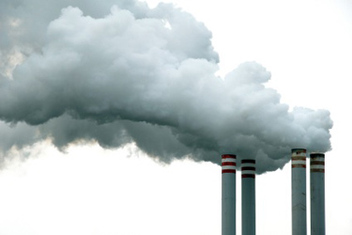 Burning coal is one of the most harmful practices on the planet. It causes irreparable damage to the environment, people’s health and communities around the world. The coal industry isn’t paying for the damage it causes, but the world at large is.
Coal may be the cheapest fossil fuel on the market, but its market price is only half the story. The financial price includes a range of factors, from mining and retailing costs to government taxes and, of course, profit, but it ignores some of the biggest taxes, and costs of coal: the tremendous human and environmental damage it causes (Greenpeace).
Consider the following facts and figures:1. BURNING COAL - cause smog, acid rain, global warming and air toxics. A typical coal plant generates 3,700,000 tons of carbon dioxide (CO2), the primary human cause of global warming--as much carbon dioxide as cutting down 161 million trees.
2. SOLID WASTE - a typical 500-megawatt coal plant includes more than 125,000 tons of ash and 193,000 tons of sludge from the smokestack scrubber each year.
3. COOLING WATER DISCHARGE - Once the 2.2 billion gallons of water have cycled through the coal-fired power plant, they are released back into the lake, river, or ocean. This "thermal pollution" can decrease fertility and increase heart rates in fish.
4. WASTE HEAT - A typical coal power plant uses only 33-35% of the coal's heat to produce electricity.
5. COAL MINING ACTIVITIES - Surface coal mining may dramatically alter the landscape. Underground mining is one of the most hazardous of occupations, killing and injuring many in accidents, and causing chronic health problems.
6. COAL TRANSPORTATION - A typical coal plant requires 40 railroad cars to supply 1.4 million tons in a year. That's 14,600 railroad cars a year. Railroad locomotives, which rely on diesel fuel, emit nearly 1 million tons of nitrogen oxide (NOx) and 52,000 tons of coarse and small particles in the United States. http://www.ucsusa.org/ (Union of Concerned Scientist)
Click to sign petition: http://www.ipetitions.com/petition/notocoal/
Prepared by: Panalipdan-Southern Mindanao
Network Opposed to Coal-Fired Power Plant (NO TO COAL)-Davao
 1. Is there a looming energy crisis in the Philippines?
We doubt the veracity of the claims of the Department of Energy (DOE) and Aboitiz Power Corporation that there is a looming energy crisis in the Philippines, particularly in Mindanao. The so-called 'energy crisis' is not the crisis of lack of generation but a crisis of the lack of transmission and distribution. Based on the DOE data, the Philippines has a 15,763 mega watts (MW) installed capacity and only 9,069 MW peak demand. There is still huge energy surplus that we could actually consume. The Philippines is second in the world in terms of installed geothermal capacity, which should mean that we have cheaper electricity rates. But we rank among the highest in Asia in terms of electricity rate.
In a study conducted by the economist Maitet Diokno-Pascual for the World Wildlife Fund (WWF), she found out that the projected demand based on high Gross Domestic Product (GDP) projection is far off from the actual demand. The flawed forecasting model of the DOE was the main culprit of the Purchased Power Adjustment (PPA) favoring the onerous contracts with Independent Power Producers (IPP) that angered most Filipinos. PPA made us pay for the electricity generated we are not using. It was also the reason behind the bankruptcy of the National Power Corporation (NPC) which eventually led to the fiscal crisis.
2. Is there a looming power crisis in Davao?
NO. Since the forecast made by the DOE is based on a high GDP formula, therefore, the projected peak demand does not reflect the actual growth of power consumption in Davao. The claim of so-called 'looming energy crisis' is based on the projection of a big business group that the increasing explorations and operations of big foreign and local mining corporations in Mindanao needs at least 1,000 MW. These mining corporations will be using open-pit method which is very destructive to the environment. The energy to be generated by the proposed coal-fired power plant will be connected to the Mindanao grid to supply the energy demands of big mining corporations.
3. Is there an instance in the Philippines that a so-called 'clean coal technology' such as Circulating Fluidized Bed Combustion (CFBC) rejected by a local government unit and by the people?
YES, there is . Coal is a fossil-based fuel that can never be a source of clean energy. 'Clean coal' is an oxymoron. It is a dirty and deadly lie. It is just a public relations (PR) and marketing strategy of coal power corporations such as Aboitiz Power Corporation, which is telling us that they will be using CFBC which, according to them, is affordable and safe.
But in 3 March 2004, the Sangguniang Panlalawigan and the mass movement of the people of Iloilo rejected the $ 150 million CFBC project of Korea Electric Power Company (KEPCO) due to health and environmental reasons, which opted them to transfer to Cebu because the Provincial Government is accommodating them.
4. Will a 52.7 hectares of 300 MW Coal-Fired Power Plant proposed in Brgy. Binugao, Toril, Davao City and Brgy. Inawayan, Sta. Cruz, Davao del Sur have tremendous effects on the health of the Dabawenyos?
YES. CFBC uses much lower temperature and less oxygen, resulting in carbon monoxide formation and incomplete breakdown of organic compounds leading to the release of Polycyclic Aromatic Hydrocarbons (PAHs), of which the most potent cancer-causing agents are benzo anthracene and benzo pyrene (JL Jacobson, et. Al Journal of Pediatrics 116:38-44. 1990).
Coal-Fired Power Plants are proven to emit heavy metals like mercury, lead, arsenic, and cadmium. The ash samples taken from the ash ponds of Salcon and Toledo Power analyzed by the Philippine Institute of Pure and Applied Chemistry (PIPAC) based in Ateneo de Manila University (AdMU) revealed the presence of these neurotoxic chemicals.
Scientific facts tell us that cadmium causes cancer; lead causes mental retardation, gastrointestinal and kidney disorders; arsenic causes liver, lung and skin cancers; and mercury causes permanent damages to the brain and kidneys, congenital disorders, and ailments in the skin, lungs, heart and eyes.
5. Will the same KEPCO technology proposed in Davao City affect our potable water source?
YES. Based on the second level scoping report on the rejected KEPCO proposal in Banate, Iloilo, a 100 MW coal-fired power plant will require 5,000 drums of freshwater per day. It will also require 300 cubic meters or 30 dump trucks of limestone per day which means 109,500 cubic meters of land taken per year. With reference to this report, a 300 MW proposed coal-fired power plant of Aboitiz would require 15,000 drums of freshwater per day or 5,475,000 drums per year and 900 cubic meters of limestone per day or 328,500 cubic meters of limestone per year.
It will definitely compete with the local community’s potable water consumption. It will surely have a tremendous impact on our potable water supply, on Talomo-Lipadas watershed (Dumoy water bed), the main source of Davao City Water District (DCWD).
6. What is the estimate volume of solid waste generated per year by a coal-fired power plant?
According to the calculation of Engr. Aurora Alerta-Lim based on the chemical stoichiometry (analytical chemistry) of Skoog, J in 2000, a 100 MW coal-fired power plant is estimated to generate 176,943 cubic meters of solid wastes per year. In reference to the data with the proposed 300 MW coal-fired power plant in Davao City, about 530,829 cubic meters of solid waste will be generated annually.
7. Will the Aboitiz coal project have an effect on the marine and coastal environment? Based on the KEPCO's second level scoping report, a 100 MW coal plant needs 3,350,000 drums of seawater per day for cooling the boiler. For a 300 MW, it would mean 10,050,000 drums of sea water per day. It will dump to the sea of Davao Gulf a warmer, saltier and chlorinated waste water which will result in irreparable damage to our coastal and marine resources. It could affect the livelihood of small fisherfolks.
8. Will the so-called 'clean coal technology' be able to address the noise and vibration pollution?
NO. One of the major concerns of the host community is that the noise of the existing facility is already taking its toll on them. Especially when the thermal plant is starting up, the residents will not be able to sleep and hear each other. Before even contemplating on establishing the facility, the residents, especially the children should be assessed as to the extent of the neuro-behavioural effects of constant exposure to extreme noise.
9. Does the proposed coal-fired power plant emit carbon dioxide and methane aggravating global warming and climate change?
YES. Coal-Fired Power Plants are the main contributors to greenhouse gases (GHG) in the atmosphere. They account for 80% of carbon dioxide burned and released to the atmosphere.
A typical 300 MW coal-fired utility burns 150 tons of coal per hour and it emits 1.8 million tons of carbon dioxide per year.
It means coal-fired power plants mainly contribute to global warming and climate change. The negative impacts of climate change in agriculture, forestry, wetlands, rivers, watersheds, biodiversity, and communities are tremendous. The poor and marginalized sectors are the most vulnerable to the aforesaid negative impacts.
10. Is coal-fired power plant cheap? Will it bring down the rates of our electricity bill?
NO . Coal-fired power plant is not cheap since Aboitiz Power Corporation will not include the external costs such as the costs due to the impacts on health, livelihood, and environment and natural resources. It will not bring down the rates of electricity bill because under the Electric Power Reform Industry Act (EPIRA), which privatized the energy sector, the government is powerless to regulate the electricity rates. It cannot dictate upon a private power producer to decrease electricity rates.
There is no way DLPC will lower electricity rates since the motive of Aboitiz is to gain mega-profits and not the well-being benefit of the people. Aboitiz Power and its sister companies and subsidiaries, are notorious in implementing power rate increases that are unjust (the company is not losing but gaining profits) and without genuine consultation among the people. Last August 2010, DLPC implemented a P0.33 power rate hike despite the fact that it has no basis and did not undergo genuine consultation.
Aboitiz-DLPC has yet to refund the 70,000 consumers of Davao City amounting to PhP 348.425 million based on the ruling of the Supreme Court on November 2006 because it overpriced its rates. Until now, no refund has been given to the affected consumers.
11. What is the real purpose of coal-fired power plant? Foreign and local corporations are presenting doomed scenarios about energy crisis. They are dramatizing this so that our policy-makers and decision-makers and the general public as well would buy the idea of having coal as the solution to power crisis.
In fact, the proposed coal-fired power plant in Malalag town, Davao del Sur will provide power to the operations of large-scale foreign mining of SMI-Xtrata in Kiblawan, Davao del Sur and Tampakan, South Cotabato which would be needing an additional 500 megawatt power supply.
Davao City’s energy generation is for the increasing foreign mining and plantations operations in Davao del Norte, Compostela Valley Province and Davao Oriental.
Under Philippine Energy Contracting Round, the government continues to offer our national coal reserves to big local and foreign companies for explorations and production and is targeting to increase the local production of coal by 250% by 2015 in order to meet the demands of increasing numbers of coal-fired power plants to be installed in Isabela, Zambales, Negros Oriental and Occidental, Sarangani, General Santos City, Davao City, Davao del Sur, and Zamboanga City.
In Southern Mindanao alone, target areas for coal mining are Manay and Tarragona, Davao Oriental that have a total area of 17,000 hectares. Most of the coal mining areas are within the ancestral domains of the indigenous peoples. It will displace the indigenous peoples and in effect will violate their rights to land.
This kind of plunder is always challenged with resistance of the locals. Such community resistance is usually quelled with militarization which contributes further to human rights violations.
12. What are the real solutions to energy problem?
Coal is not the solution . In truth, it will create and cost more problems to people's health and the environment and worsen climate crisis. Hence, our call is to come up with 40- year moratorium on coal.
The real solution lies in a pro-people, balanced and comprehensive policy and program on energy that emphasizes the protection and efficient and sustainable utilization of our energy resources as part of our national patrimony.
It means the nationalization and people's control of energy resources and utilities that put emphasis on the research, development and utilization of alternative renewable energy sources such as wind, solar, biomass, micro-hydropower for the benefit of the people.
______________________________ Sources of data and information: - Philippine Electricity Projections by Maria Teresa Diokno-Pascual and World Wildlife Fund
- Philippine Energy Plan 2004-2013, Department of Energy
- Resolution of the Sangguniang Panlalawigan og Iloilo rejecting $150 million coal-fired power plant proposal of KEPCO
- Report of Analysis of Ash Samples from Toledo-Mirant and Salcon Power Plant, Philippine Institute of Pure and Applied Chemistry
- Primer on Circulating Fluidized Bed Combustion Project, Aboitiz Power Corporation
- KEPCO's Second Level of Scoping Report on the proposed Circulating Fluidized Bed Combustion 100 MW coal-fired power plant in Banate, Iloilo
- Chemical Stoichiometry Study of Engr. Aurora Alerta-Lim based on coal-fired power plant – based on Analytical Chemistry by Skoog, J. 2000
- Cebu Alliance for Renewable Energy (CARE)
- Kalikasan People's Network for the Environment (KPNE)
- AGHAM Advocates of Science and Technology for the People
|










 RSS Feed
RSS Feed